Best Dot Net Full Stack Development Course in Pune – ASP.NET & .NET Training with Certification"
Unlock career opportunities with our comprehensive Full Stack Dot Net Training in Pune at ECTI! Our Dot Net course is designed to equip you with the skills to become a proficient Full Stack Dot Net Developer. Dive deep into ASP.NET, Dot Net Core, and frontend technologies, combined with real-world projects to develop dynamic and responsive web applications. With expert instructors and hands-on training, you will gain proficiency in backend development, database management, and building modern web solutions. Our Dot Net training institute offers lifetime job assistance to ensure you land your dream job as a Dot Net Developer. Enroll today and start your journey in the ever-growing field of Full Stack .NET Development.
Comprehensive Full Stack Development – Hands-on Projects – Expert Instructors with Industry Experience – Job-Oriented Training – Flexible Learning Options -Industry-Standard Curriculum -Affordable Course Fees – Placement Support & Interview Preparation -Certification -Guaranteed Skill Enhancement

4.9/5
Java Full Stack Reviews
Hurry Up!
batch is starting soon...
only 5 seats are available for this batch
Advantages
- Lifetime placement assistant Till You Get A Job
- Unlimited Placement Calls
- Affordable cost
- 10+ years industry experienced trainers

10000+ Happy Students.

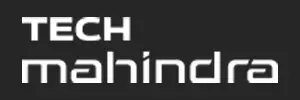
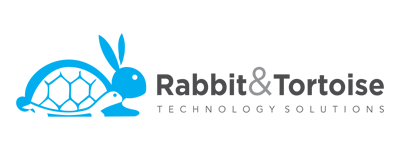
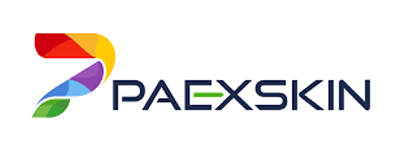

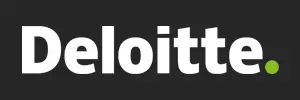

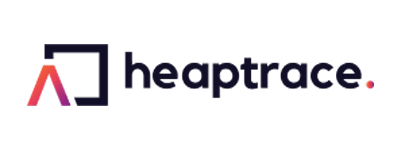
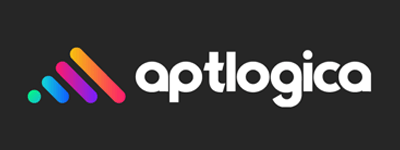
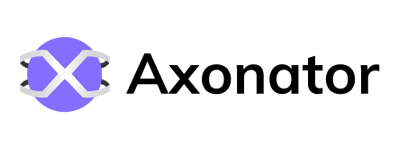
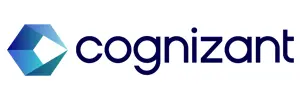
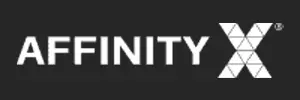
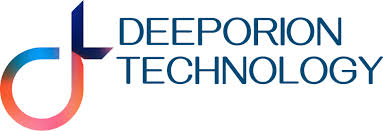




Rushikesh Pawar
TALENTRUPT RPO LLP
System Administrator
July, 2024
MIT ADT UNIVERSITY PUNE
B.Tech mech - 2022

Piyush Yadav
Future Tech Design Solutions Pvt. Ltd. Gurugram.
Digital Modeler Class A
December, 2024
University of Engineering and Management, Jaipur (Rajasthan)
B. Tech (Mechanical Engineering) -2021

Shubham Sawalkar
Studio Key designs LLP
CAS Modeller
September, 2024
Symbiosis Skill & Professional University
B.Tech.(Automtion ) - 2021

Sagar Valunj
Kamjritztex IT solutions
Java Fullstack Web Developer
December, 2024
BE (IT) - 2023
Comprehensive Full Stack .NET Development Course
The Full Stack .NET Development course at ECTI provides a comprehensive foundation in both front-end and back-end web development. Students will begin by mastering .NET programming fundamentals and advance to technologies like ASP.NET MVC, JavaScript, jQuery, and SQL Server for database management. They will also gain hands-on experience with modern front-end frameworks such as Angular and React to create responsive, dynamic user interfaces. The course emphasizes practical learning, enabling students to build real-world projects that showcase their skills and prepare them for industry challenges. They will also acquire expertise in back-end technologies like JSP, Servlets, AJAX, and JSON, enhancing their ability to design and develop complete web applications.
Guided by experienced instructors, students will receive a blend of theoretical knowledge and practical training aligned with current industry trends. The curriculum also focuses on key aspects of security and performance optimization, ensuring that students are equipped with skills that are in demand in the IT industry. By the end of the course, students will have a professional portfolio featuring 8+ web applications, demonstrating their ability to handle full-stack development. Whether you’re designing responsive websites with HTML5, CSS3, and Bootstrap, or creating interactive SPAs with React.js and connecting to external APIs like Google Maps, this course will give you the tools to succeed as a Full Stack .NET Developer.
Key Features of the Dot Net Full Stack Course

Comprehensive Certification & Job Assistance
Earn a shareable certificate upon completion and benefit from lifetime job assistance, including interview prep, portfolio building, and internship opportunities.

Flexible Learning Options
Choose from online or offline courses, with training designed for beginner, intermediate, and advanced learners, covering all aspects of Dot Net development.

Industry-Relevant Curriculum
Gain hands-on experience with ASP.NET, React.js, JavaScript, SQL Server, and over 20 in-demand tools and skills, backed by 600 hours of real-time projects.

Practical, Project-Based Learning
Focus on 100% practical sessions, completing 10 lesson-end projects and 4 phase-end projects, ensuring a strong portfolio for job readiness.

Expert Guidance & Mentorship
Learn from instructors with over 23 years of industry experience, with personal mentorship and live online classes offering 8x higher interaction.

Affordable & Accessible Training
Enjoy cost-effective fees, with EMI options available, and a 100% course completion rate, making it an ideal choice for career advancement in Dot Net development.
Why ECTI?
Lifetime Job Assistance
With our Lifetime placement assistant courses, you can achieve your career goals.

Cost Effective
We know how much money you need to invest in getting technical knowledge. Thus we have made sure the courses we provide are not just the best but also absolutely cost effective.
Industry Experts Lectures
With our Lifetime placement assistant courses, you can achieve your career goals.
Free Interview Training
Interview technique is a major hurdle for students trying to get a job. At Envision, we ensure your development.
Mock Interviews
We also make sure that a fresher isn't a fresher when it comes to his interviews from experts and people actually working in HR at various renowned companies.
Most Updated Syllabus
We are proud to mention that our syllabus is updated every quarter.

Java full stack developer course syllabus - Learning path HTML
What is HTML?
What is meant by tags?
What is meant by attributes?
Structuring a web page
What is JavaScript?
What is meant by tags?
What is meant by attributes?
Structuring a web page
What is ReactJS?
What is meant by tags?
What is meant by attributes?
Structuring a web page
What is Core Jawa?
What is meant by tags?
What is meant by attributes?
Structuring a web page
What is Advance Jawa?
What is meant by tags?
What is meant by attributes?
Structuring a web page
What is Mysql?
What is meant by tags?
What is meant by attributes?
Structuring a web page
Dot Net Full Stack Development Professional Certificate Course
Kickstart your career as a Full Stack Developer with our comprehensive Dot Net Professional Certificate Course. Designed for both beginners and experienced developers, this course will equip you with the essential skills needed to build, deploy, and manage Full Stack applications using ASP.NET, HTML, CSS, JavaScript, jQuery, React.js, and SQL Server. With a strong focus on practical learning, you’ll gain hands-on experience through real-world projects to build a professional portfolio that showcases your expertise to potential employers.
Throughout the course, you’ll complete 10 hands-on projects that will allow you to demonstrate your proficiency in Full Stack development. By the end, you will have a certification that not only validates your skills but also unlocks career support resources and job placement assistance to help you thrive in the competitive IT job market. Whether you're looking to land your first job or advance your career in Dot Net development, this course will prepare you to excel in web development and application design.

Dot Net Full Stack Developer Placement Assistance
Enroll in our Dot Net Full Stack Development Course in Pune and gain access to Lifetime Job Assistance with top tech companies. Our course is designed to equip you with the essential skills to secure your dream job as a Full Stack Developer. With placement opportunities offering salaries ranging from 3.5 LPA to 7.0 LPA, we provide comprehensive support, ensuring that you’re job-ready and well-prepared for the industry’s demands. Our alumni have successfully found placements in leading companies like TCS, Cognizant, and Capgemini, showcasing the effectiveness of our placement process.
Our placement assistance includes personalized grooming, industry-relevant mock tests, and mock interviews to help you build confidence and refine your skills. We offer tailored profile matching and support from a personal student coordinator to guide you every step of the way. In addition, we provide training in salary negotiation to ensure you secure the best compensation and offer assistance in creating a standout online portfolio, LinkedIn profile, and resume. You’ll also receive expert-led soft skills training and placement webinars to stay updated on the latest industry trends, boosting your chances of success. With over 500+ recruitment partners, the opportunities are endless for our students.

Individual Grooming
Guidance on aptitude, resume building, and interview preparation.

Mock Tests & Interviews
Industry-relevant mock tests and interviews with personalized feedback.

Profile Matching
Align your profile with top job openings.

Personal Coordinators & Salary Negotiation
Dedicated support and salary negotiation tips.

Portfolio Building & Soft Skills
Boost your LinkedIn, resume, and soft skills to stand out.

Placement Webinars & Expert Insights
Regular webinars and insights from industry experts on placement trends.
With over 500+ hiring partners, Envision is your bridge to a successful tech career.
Expert Dot Net Trainers at Envision Institute in Pune
At Envision, we believe that teaching and learning are the cornerstones of a successful training institute. Our team of certified Dot Net trainers is dedicated to providing the best learning experience, equipping you with the skills to succeed as a Full Stack Developer. With over 5+ years of industry experience, our trainers bring real-time examples and practical knowledge to every session, ensuring that you gain both theoretical understanding and hands-on skills in Dot Net technologies.
Our trainers are industry professionals with 7+ years of experience and are currently working with top MNCs. Their expertise allows them to guide students through live projects, providing exposure to real-world applications. In addition to their teaching, they also assist students in preparing for interviews and offer valuable insights to ensure job readiness. Our trainers play an active role in the placement process, leveraging their network and internal hiring processes to help students secure positions in top companies. Learn from the best with our Dot Net Full Stack Developer course and gain the skills you need to thrive in the tech industry.

Our students words speaks for us
FAQ's
Is .NET good for full stack developer?
Skills required for .NET Full Stack developers include proficiency in C#, ASP.NET MVC, front-end development (HTML, CSS, JavaScript), database management (SQL), Entity Framework, RESTful web services, version control (Git), problem-solving, communication, and continuous learning.
What skills required for .NET Full Stack Developer?
What is the salary of a full stack .NET developer in India?
Is .NET enough to get a job?
Which job is best in .NET?
1. Junior .NET Developer
It is the starting position for a software engineer. The engineer is responsible for writing, analyzing, testing, and debugging the code in this position. They are generally a part of a team with leaders and mentors to whom they have to report.
As this is the developer’s first job, they must focus on getting familiar with all the industry practices and standards at this stage. One must also focus on developing new skills to get better at their craft and thus make it easier for them to have a better position in the same company or switch to a better company. It is one of the good .NET career opportunities.
2. Senior .NET Developer
The complete charge of a project is what generally a senior developer is responsible for. In addition, they report to the company’s executive officers and managers and write some code. They are also accountable for mentoring the developers that are new to the company or the project they are working on. It is seen as the standard job position for a developer.
3.NET Architect
The responsibility of a .NET architect is to design and develop the application’s layout. They classify the different logic layers, which further helps separate concerns among the team members working on the project.
The expectation from the architect is to develop the best technologies that are well-matched for the software to be built and ensure their compatibility with each other.
These job postings are generally posted by top companies that don’t need a PHP programmer who can do several things but just a programmer skilled in a particular area to optimize and enhance an existing product. Apart from these, field-specific job postings require the programmer to be effective in a particular set of things. These include jobs like.
1 .NET Web Developer
A .NET web developer is usually at a backend position, and the responsibilities include deployment and maintenance of the server-side code. It is very helpful if you know the basics of cloud computing as cloud-based systems are growing fast in the industry.
8. Full stack .NET Developer
If you are interested in working on web applications, you may consider a position as a full-stack Java developer. Full-stack .NET developers often lead web development teams that design new websites and update existing ones. Developers may create web-based applications for a company or work with many businesses as a consultant. As consultants, they may provide advice and complete tasks for businesses using their various skills related to web-based programming. You must have the following skill to become a full-stack developer.
In-depth understanding of how to design front-end frameworks
Must have testing ability
Friendly with microservices and implement them in an application
One must be familiar with various tools. It increases efficiency and works with a variety of web technologies. DevOps tools like Docker, Ansible and AWS help developers create applications quickly by helping them plan, test and monitor their code
One must have extensive knowledge of libraries and understand how to create APIs within the code they write.
9. Freelancing
Various freelance websites present on the Internet like LinkedIn have made Freelancing easy and made networking with clients very fast using different online platforms. Freelancing can also work as a part-time .NET career opportunity. It helps you in getting experience & add it to the CV as well.
But freelance isn’t that easy and comes with its challenges such as
Less pay at the start
High competition
Irregular frequency of work
Demanding clients
Freelance work for .NET developers can generally be categorized into two types, centered at two different kinds of freelancers. Coding Jobs: These are the gigs where you are required to work on a project or develop a new feature. These jobs are a very good start for your career. Fortunately, these jobs are mostly remote. You can freelance as a DotNet web developer or a DotNet app developer.
10. Consulting Developers
Those who have some years of experience in the industry usually get hired as developers. These jobs are generally posted by companies working on a short deadline targeting the launch or enhancement of a product or feature. These jobs are generally on-site work, and freelancers are part of the projects team. The contract ends at the end of the project.
Related courses

Web development for beginners: basic concepts worth knowing

Latest Job Opening

New Course

Hello world!
